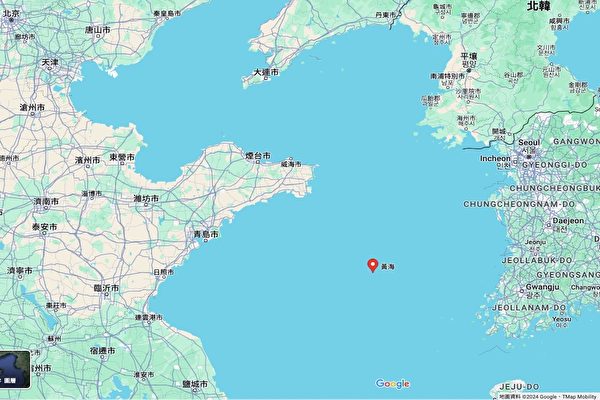In addition to the South China Sea, Taiwan Strait, and East China Sea, in recent years, the Chinese Communist Party (CCP) has been continuously creating disturbances in the Yellow Sea by unilaterally installing large steel structures in the overlapping exclusive economic zones (EEZ) between China and South Korea, triggering high levels of concern in South Korea. South Korean media have warned that Beijing’s quietly advancing actions in the Yellow Sea pose a threat to Korean sovereignty comparable to the Korean War.
The largest media organization in South Korea, the Chosun Ilbo, published an article on Friday (July 11th) local time, stating that since its founding, South Korea has only faced a territorial threat once 75 years ago from the north. Today, for the second time in history, a violation is underway – this time, from the west.
Unlike the direct violent conflict of the Korean War, Beijing is quietly pushing forward with its so-called “Yellow Sea Project,” making it difficult for the public to perceive its severity. However, if the CCP ultimately succeeds in turning the Yellow Sea (referred to as the West Sea by South Korea) into its internal sea, the consequences for South Korea would be extremely serious.
An “internal sea” generally refers to a body of water surrounded by land and connected to the outer sea only through narrow channels. Unlike territorial waters where foreign vessels are granted innocent passage, an internal sea allows coastal states full control, similar to land territory.
South Korean media pointed out that although Beijing’s claims do not comply with international law, if the CCP quietly progresses and eventually declares the Yellow Sea as an internal sea, it would mark a significant expansion of its sovereignty towards the Korean Peninsula, posing a clear threat to South Korea’s national security.
Due to the narrowness of the Yellow Sea, the exclusive economic zones of China and South Korea overlap. In 2000, Beijing and Seoul signed a fisheries agreement designating the overlapping EEZ in the Yellow Sea as a provisional measures zone (PMZ) to be jointly managed by both countries. Within the overlapping EEZ, both sides are allowed to conduct fishing activities but are prohibited from constructing facilities and engaging in resource exploitation.
However, since 2018, Beijing has unilaterally installed multiple large steel frame structures in the area, claiming they are for aquaculture purposes related to fishing, but these platforms can easily be repurposed for military use. The South Korean Ministry of Foreign Affairs has lodged formal protests, but China has not responded.
In February 2025, when a South Korean research vessel, the “Wenuri,” approached the area for investigation, China deployed two large ships and three inflatable boats to block the South Korean research vessel. During this maritime standoff between China and South Korea, a Chinese personnel even threatened the South Korean researchers with weapons.
South Korean media stated that Beijing’s construction of such facilities in the South China Sea is laying the groundwork for future claims of sovereignty over the entire Yellow Sea – mirroring its strategy in the South China Sea where it first built artificial islands and then made extensive sovereignty claims, including the so-called “Nine-Dash Line.”
The report called for South Korea to closely cooperate with the United States, Japan, and other members of the international community to take coordinated responses and emphasize the importance of strengthening naval power.
If China refuses to dismantle these structures, South Korea should consider building similar facilities in response. Vietnam’s construction of artificial islands in the South China Sea provides a useful precedent.
At the same time, the report expressed disappointment in the perceived weakness of the South Korean government in dealing with Beijing and stressed that the most important thing is for South Korea to show firm resolve in defending its maritime sovereignty.

